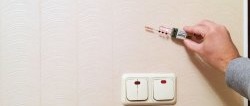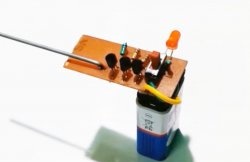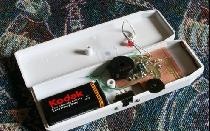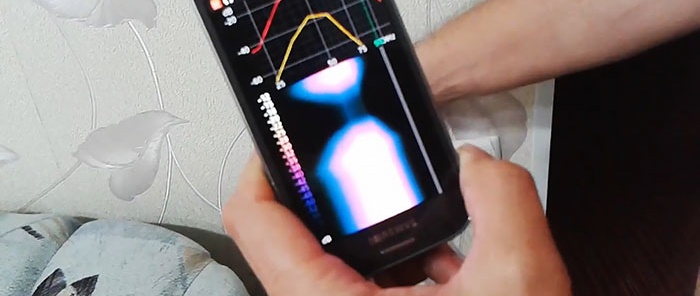
If you are going to fulfill your manly duties: “drive in a nail,” then first you need to drill a hole in the wall for it. To avoid getting caught in the wiring and receiving a fatal electric shock, you need to make sure that there is no electrical wire running through this area.
If you do not have a special device for this, then your smart phone - a smartphone - will come to your aid.
Making a hidden wiring detector from a smartphone
It is necessary to take an unnecessary or broken headset. Take it apart and remove the microphone. Instead, solder a 1-10 nF capacitor.

Now this headset will play the role of a sensor and will pick up network interference with a frequency of 50 Hz.
This is a real-time spectrum analyzer.
Install and launch. We stretch the scale in the 50 Hz band. The device is ready for use.
Search for wiring
First, let's go through the factory device and determine the location of the wire.
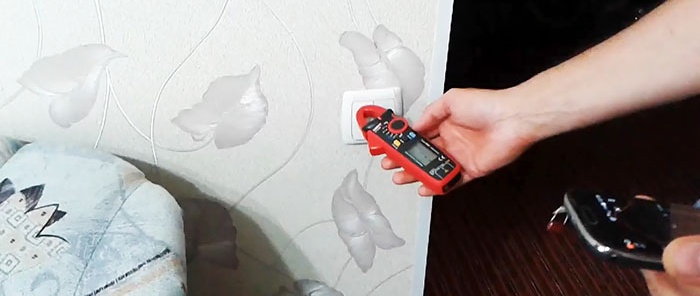
Then comes the smartphone.We bring the headset with a soldered capacitor and search it on the wall.

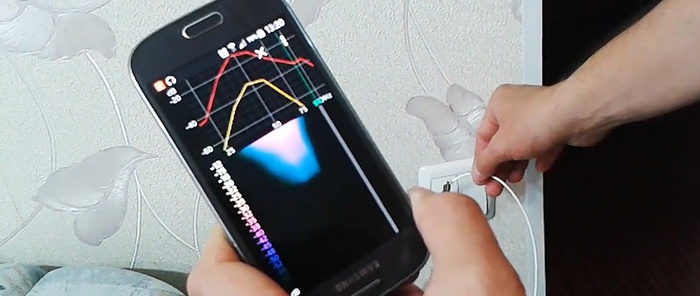
The smartphone clearly displays all levels and it is very easy to trace the direction of the cable.

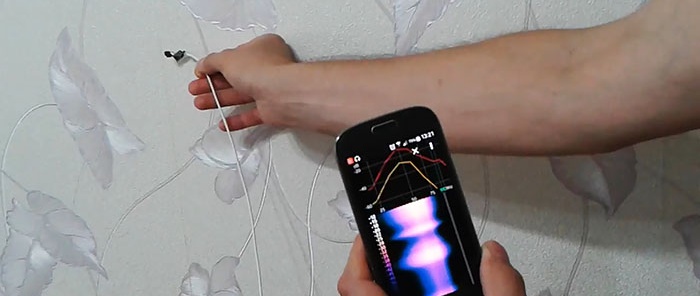
In terms of sensations and visualization, this device, in my opinion, works even better than the factory device.
This detector has a very high sensitivity, which can be adjusted in the application. Also, the program itself has many different settings, which is very convenient and useful in work.
